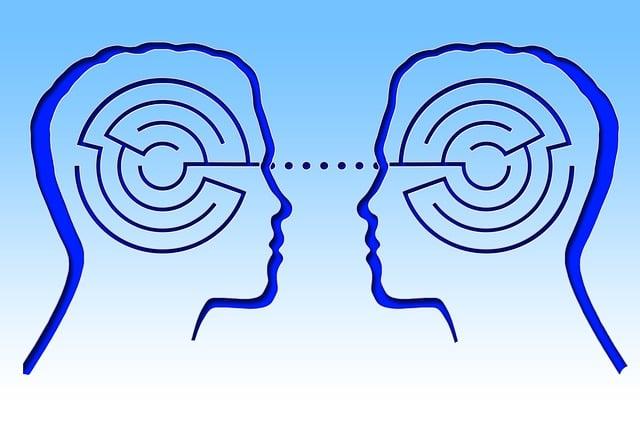Imagine walking into a bustling marketplace where a vibrant blend of sounds fills the air—laughter, chatter, and the rhythmic thump of drums that beckon you to dance. In that moment, it seems as though everyone, regardless of their spoken language, is united in a shared experience. This mystique surrounding music often leads us to the tantalizing question: Is music truly a universal language of humanity? From the haunting melodies of a Native American flute to the infectious beats of African tribal drumming, music transcends cultural boundaries, speaking to the emotions that bind us all. But as we explore this idea, we must consider the nuances of human expression and the cultural contexts that shape our musical experiences. So, let’s dive in and unravel this captivating concept together, examining whether music is a genuine universal language or just an enchanting illusion that masks our diversity.
Exploring the Emotional Resonance of Melodies Across Cultures
When we dive into the melodies that grace our ears from across the globe, it’s fascinating to discover how music can evoke similar feelings regardless of cultural background. Think about it: when you hear a melancholic violin solo, doesn’t it tug at your heartstrings the same way it would for someone in a bustling city in Japan or a quiet village in Italy? This emotional resonance creates a tapestry of shared human experience, weaving together narratives of joy, sorrow, love, and loss through distinct yet relatable sounds. Various cultures employ differing instruments and scales, yet the feelings they convey—like comfort during grief or exhilaration during celebration—bridge the gaps between us.
Moreover, the elements of melody and rhythm might differ, but the overarching themes often remain strikingly similar. Across cultures, certain musical forms tend to express universal experiences. For example:
Common Themes in Music
- Celebration: Birthdays, weddings, festivals
- Grief: Mourning, remembrance
- Love: Romantic expressions, familial bonds
- Spirituality: Rituals, prayers, reflections
This alignment suggests that music does more than just entertain: it acts as a vessel for our deepest emotions, enabling us to express what sometimes words cannot articulate. Think of it as a shared language that transcends geography—bringing people together during moments of elation or sorrow, reminding us that we’re part of something much larger. Each note plucked, beat struck, or lyric sung adds to this global conversation.

The Role of Music in Bridging Communication Gaps
When we listen to a melody that resonates with our soul, it’s like stepping into a world where words fade into the background. Music possesses this incredible ability to connect people across different cultures and languages. Think about it: even if we don’t understand the lyrics, a catchy beat or a haunting violin solo can evoke powerful emotions that transcend our linguistic boundaries. It’s almost as if music acts as a bridge, allowing us to share feelings and experiences that might otherwise remain locked behind the barriers of language. Imagine strolling through a bustling marketplace in another country, for example, and suddenly hearing a familiar tune that prompts you to smile or dance. It creates an instant connection, doesn’t it?
Moreover, music can foster understanding in situations where dialogue might falter. It encourages us to express ourselves in ways that spoken language often can’t. Consider these scenarios:
- Therapeutic Settings: Music therapy has been shown to help break through emotional walls, allowing individuals to communicate complex feelings without speaking.
- Global Events: During international festivals, artists unite diverse audiences with their performances, igniting a shared sense of joy and celebration.
- Social Movements: Protest songs have historically rallied people around common causes, giving voice to the voiceless and creating a powerful sense of solidarity.
In essence, music is much more than entertainment; it’s a vital tool for connection, helping us navigate the complexities of human experiences. Whether it’s a soothing lullaby bringing a parent and child together or a rousing anthem sparking social change, music speaks to our shared humanity in ways that words often cannot.

Understanding Cultural Contexts: When Beats Speak Louder than Words
Music has this incredible ability to transcend geographical boundaries and cultural divides, effortlessly weaving through the tapestry of human emotions. Think about it: a simple beat can ignite a dance floor in Brazil and evoke tears in a somber folk gathering in Ireland. It’s not just about the words or even the melodies; it’s the rhythm that resonates deep within us, tapping into the core of our shared experiences. As folks from different backgrounds sway to the same beat, they might not speak the same language, but in that moment, they are united by a universal pulse that speaks louder than any spoken word.
There’s a certain magic in how sounds can convey meaning without saying a thing. Consider how certain genres can evoke specific feelings or memories: the quick tempo of a samba might inspire joy and celebration, while the soft notes of a classical sonata can envelop one in nostalgia. Cultural contexts shape our interpretation, turning mere notes into powerful narratives. This intriguing interplay reminds us that what seems like a straightforward melody can actually be a complex language of its own, rich with cultural significance and emotional depth. Isn’t it fascinating how a single tune can draw parallels across continents, bridging gaps and creating connections in ways that words sometimes simply can’t?
Harnessing Music as a Tool for Global Connection and Understanding
Imagine a bustling street market, where the vibrant sounds of life dance in the air—vendors shouting, people laughing, and amidst it all, a melodious tune floats by. This is where music acts as an invisible thread, weaving together diverse cultures into a rich tapestry of shared experience. Music goes beyond mere notes and rhythms; it speaks to the soul, conveying emotions that words often can’t encapsulate. It resonates in every corner of the globe, from the heart-wrenching ballads of a forlorn lover to the uplifting beats of a celebration. This universal quality allows individuals from vastly different backgrounds to connect on an emotive level, fostering understanding and empathy. What do you think it feels like when a stranger sings the same song that meant the world to you? It’s like meeting a long-lost friend, isn’t it?
Across continents and cultures, music serves as a bridge, enabling dialogues without the limitations of language. This phenomenon can be seen in the way people come together at a concert, swaying to the same rhythm, sharing a moment that transcends their differences. It’s akin to a universal handshake, where beats and melodies become a language of their own. Consider these ways music facilitates connection:
- Collaboration: Artists from various genres collaborate, creating fusion music that blends different styles, cultures, and traditions.
- Social Movements: Songs often accompany movements, amplifying messages of unity and change.
- Cultural Exchange: Festivals and events celebrate music from around the world, promoting global appreciation.
By embracing music’s power, we can foster a sense of belonging and cultivate a world that celebrates diversity through understanding.
Closing Remarks
As we hit the final note in our exploration of music and its role as a universal language, it’s clear that the rhythm of this art form transcends borders and cultures. Music connects us in ways that words often can’t—think of it as the fabric that weaves the tapestry of humanity together. Whether it’s a joyous melody that makes you want to dance or a heart-wrenching ballad that brings tears to your eyes, there’s no denying that music touches the soul in ways that defy explanation.
So, is music truly a universal language? Well, it certainly seems to be a powerful force in bridging the gaps between us. It speaks to our shared experiences, eliciting emotions that resonate regardless of where we come from. While the notes may vary, the feelings they evoke often remain the same, providing a common ground for people around the globe.
As we wrap up this symphonic journey, let’s remember that, while language can sometimes divide us, music has an incredible ability to unite us. So the next time you find yourself tapping to a beat or humming a tune, take a moment to appreciate the connections it can forge. After all, in this grand concert of life, we’re all part of the same orchestra, each playing our unique part but harmonizing beautifully in the end. Keep listening, keep sharing, and let the music play on!



